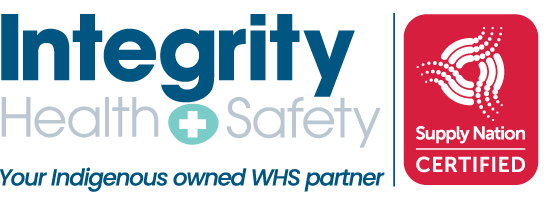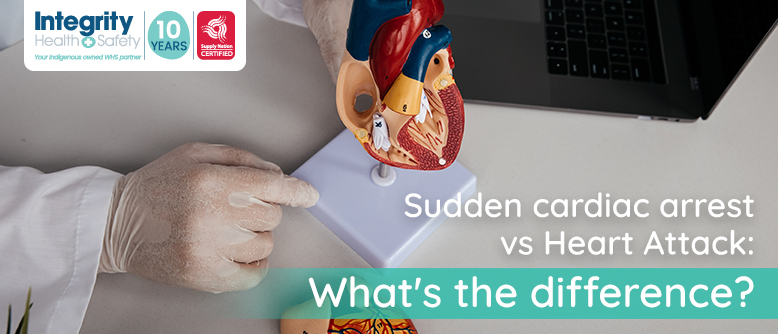Cardiac arrest VS heart attack — they’re the same right?
Not necessarily, and we get why many are confused about the difference between heart attack and cardiac arrest. While one often gets featured in soaps and medical dramas, the other seems shrouded in uncertainty, especially for Australians who are more familiar with Aussie slang than medical terminology.
The truth is that both cardiac arrest and heart attack can have serious consequences, which is why it pays to know how they differ!
In this blog post, we’ll explain these two important terms so you can have the knowledge to make informed decisions regarding cardiovascular health. Read on to get clued up on heart attack vs cardiac arrest—the easy way!
First, let’s define heart attack
A heart attack, also known as a myocardial infarction, is a medical condition in which the blood supply to a part of the heart muscle is blocked, usually by a buildup of fatty deposits in the arteries that supply blood to the heart.
This can cause damage or death to the heart muscle, leading to the following heart issues symptoms:
- chest pain
- shortness of breath
- pain or discomfort in other parts of the body like the arms, neck, jaw, back, or stomach
- lightheadedness or dizziness
- nausea or vomiting
- rapid or irregular heartbeat
Heart attacks are often caused by underlying conditions such as coronary artery disease, high cholesterol, high blood pressure, smoking, and a sedentary lifestyle, among others.
What is cardiac arrest?
A sudden cardiac arrest is a life-threatening condition that is a result of an electrical problem that affects the heart’s rhythm. This causes the heart to stop pumping blood and sending oxygenated blood throughout the body.
Sudden cardiac arrest can be caused by a number of factors including heart disease, heart attack, cardiomyopathy, heart rhythm disorders, and electrocution. It can also be caused by external factors such as drug overdose, severe trauma, or severe hypothermia.
Signs of cardiac arrest include:
- shortness of breath or chest pain
- fainting
- almost immediate unresponsiveness with no pulse detectable
Sudden cardiac arrest takes the lives of about 25,000 Australians every year and affects people of all ages. Each case is different based on individual risk factors such as age, lifestyle choices, overall health status, and family history.
So, is a cardiac arrest a heart attack?
Is a heart attack the same as a cardiac arrest? The answer is no, they are not the same thing.
| Feature | Sudden Cardiac Arrest | Heart Attack |
|---|---|---|
| Definition | Sudden and unexpected cessation of heart function, usually due to an electrical malfunction in the heart. | Blockage of blood flow to a part of the heart, causing damage to the heart muscle. |
| Symptoms | Sudden loss of consciousness, no pulse or heartbeat, lack of blood flow to the body. | Chest pain or discomfort, shortness of breath, pain or discomfort in the arms, neck, jaw, back or stomach, breaking out in a cold sweat, lightheadedness or dizziness. |
| Causes | Heart disease, heart attack, cardiomyopathy, heart rhythm disorders, drug overdose, severe trauma, severe hypothermia, electrocution. | Coronary artery disease, high cholesterol, high blood pressure, smoking, family history, sedentary lifestyle, stress, poor diet. |
| Treatment | CPR, defibrillation, advanced medical interventions (e.g. cardiac catheterization, implantable defibrillators, medications). | Medications, lifestyle changes, angioplasty, bypass surgery, stenting. |
| Outcome | Can be fatal if not treated promptly. | Can lead to heart damage and increase the risk of future heart problems, but treatment can help manage symptoms and improve prognosis. |
[/asvc_table]
Table 1: Sudden cardiac arrest VS Heart attack
Can we prevent heart attack and cardiac arrest?
A heart attack does not usually result in sudden cardiac arrest and death. As outlined in the table above, treatment for a heart attack may include medications, lifestyle changes, and procedures such as angioplasty, bypass surgery, or stenting.
On the other hand, treatment for cardiac arrest is more urgent than for a heart attack because it requires immediate intervention. When the heart stops beating, it can lead to a sudden loss of consciousness and death within minutes if not treated immediately.
The most immediate and effective treatment for sudden cardiac arrest is cardiopulmonary resuscitation (CPR). It can help maintain blood flow to the heart and brain. This effort is paired best with the use of a portable defibrillator or an AED (defibrillator).
What does a defibrillator do?
Automated external defibrillators are a device that delivers an electrical shock to the heart to restore its normal rhythm in the event of a cardiac arrest.
How an AED works
- During a cardiac arrest, the heart’s electrical system can become disrupted, causing it to beat erratically or stop beating altogether.
- An AED works by analysing the heart’s rhythm and determining whether a shock is needed to restore normal function.
- If a shock is required, the AED delivers a carefully controlled electrical current to the heart, which can help to reset the heart’s rhythm and restore normal blood flow.
AEDs are designed to be used by laypeople with minimal training, making them a valuable tool for first responders and bystanders in the event of a cardiac arrest. They are widely used in public places, such as airports, shopping centers, schools, and sports arenas, to help save lives in the event of a sudden cardiac arrest.
Where to buy an AED — Integrity Health & Safety
Integrity Health & Safety is a Supply Nation certified Indigenous-owned company We are dedicated to being a socially responsible, sustainable, and ethical business that offers clients top-notch WH&S products and services while working to improve Indigenous health care.
Drawing on our extensive experience as Paramedics and healthcare workers, we provide expert advice on the best practices for defibrillators as part of a home, community, or workplace first aid kit, empowering staff to act confidently in an emergency.




Comments are closed.